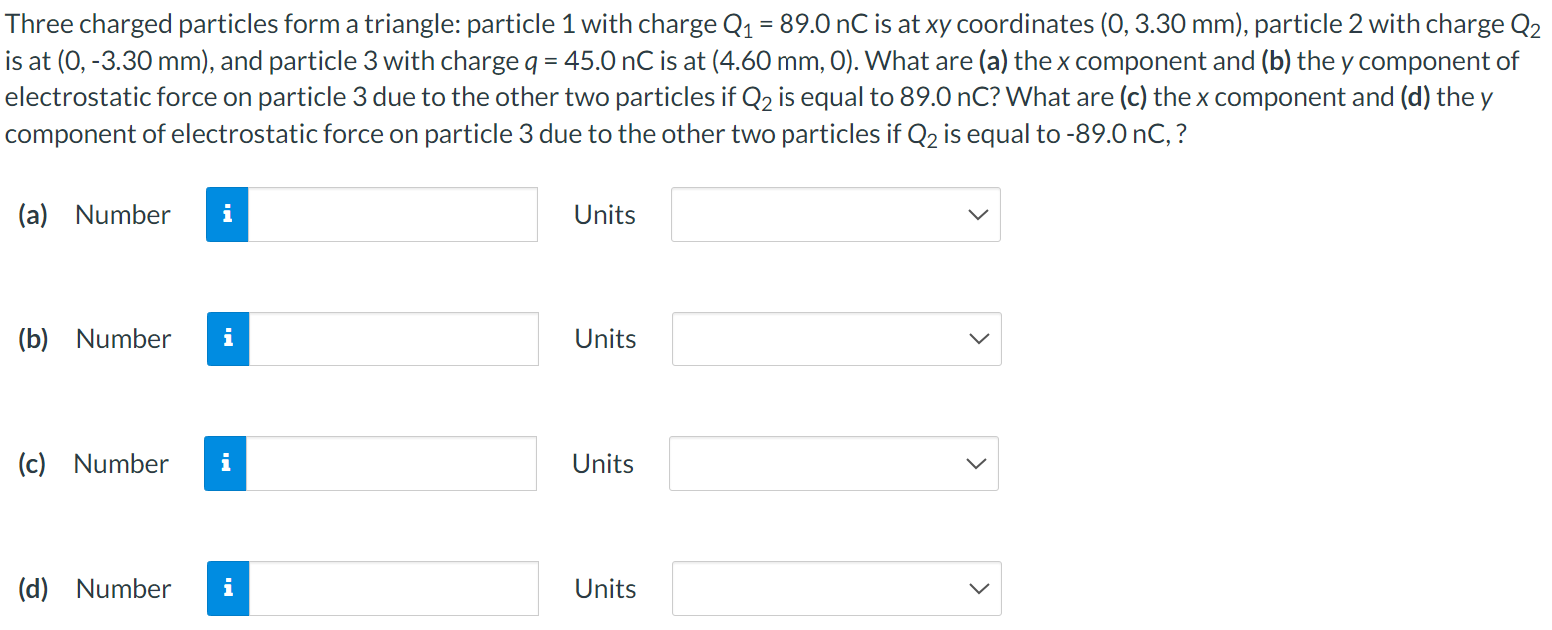Three charged particles form a triangle: particle 1 with charge Q1 = 89.0 nC is at xy coordinates (0, 3.30 mm), particle 2 with charge Q2 is at (0, −3.30 mm), and particle 3 with charge q = 45.0 nC is at (4.60 mm, 0). What are (a) the x component and (b) the y component of electrostatic force on particle 3 due to the other two particles if Q2 is equal to 89.0 nC? What are (c) the x component and (d) the y component of electrostatic force on particle 3 due to the other two particles if Q2 is equal to - 89.0 nC,? (a) Number Units (b) Number Units (c) Number Units (d) Number Units
